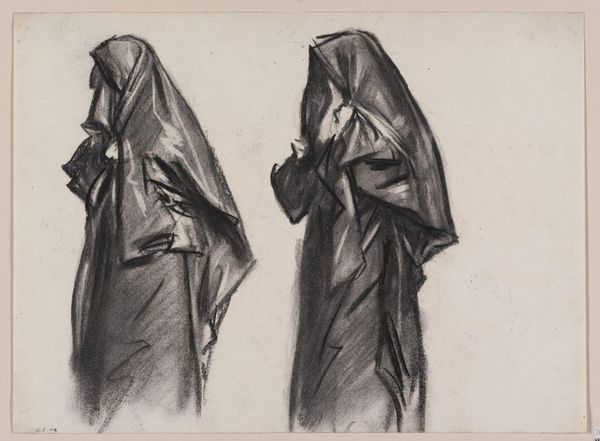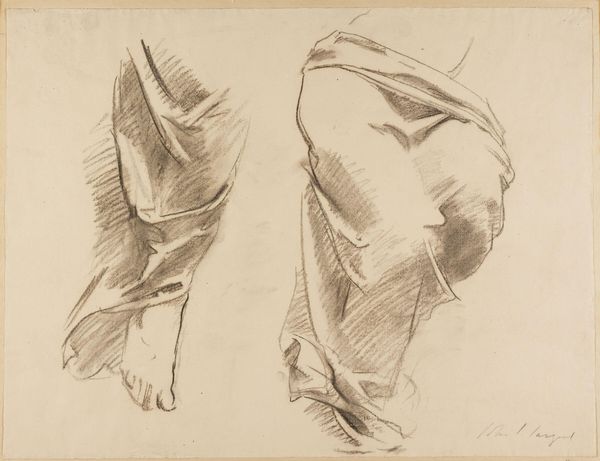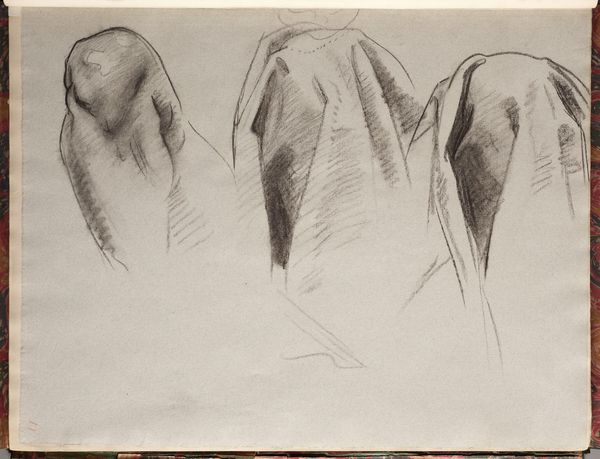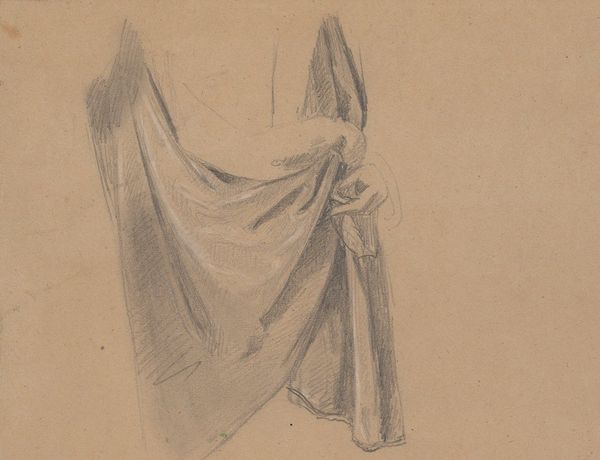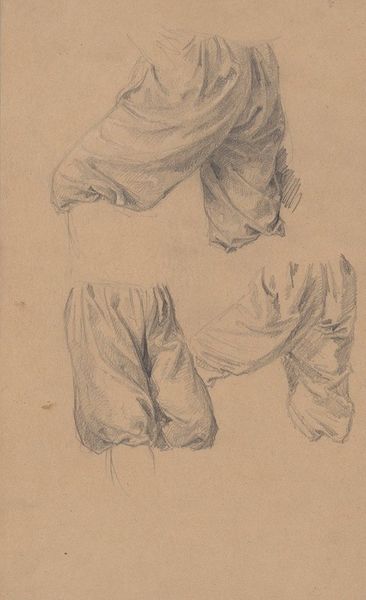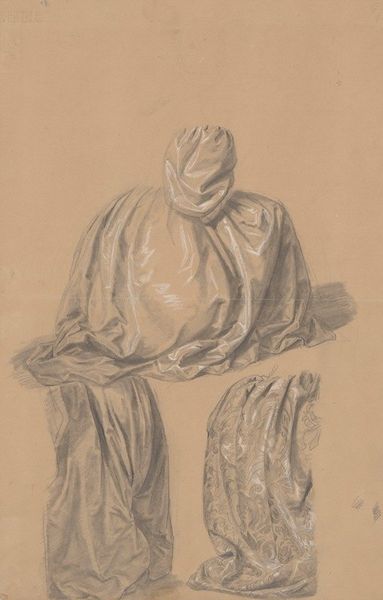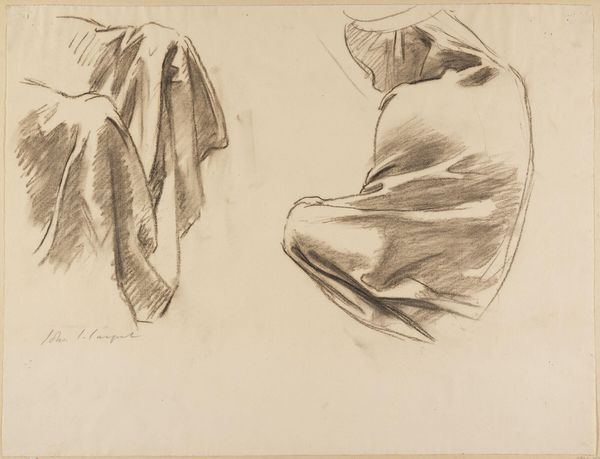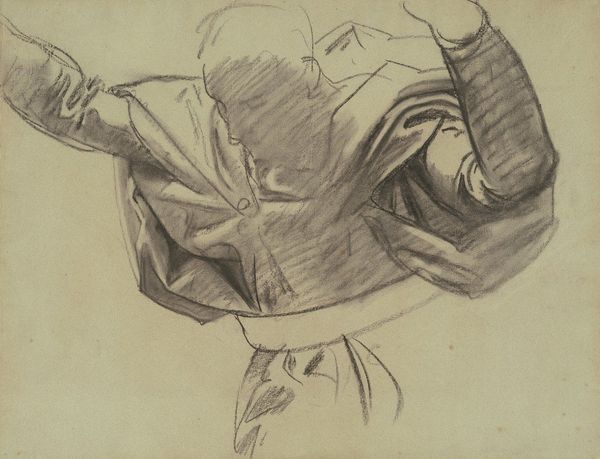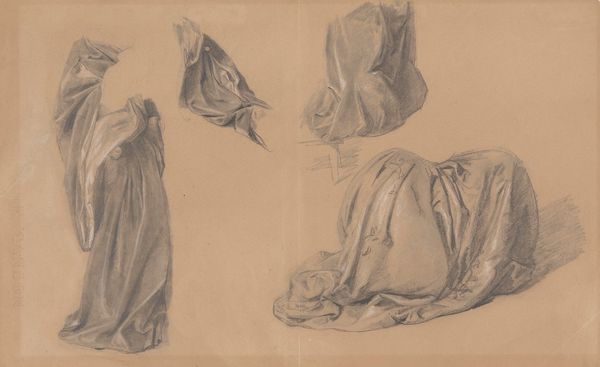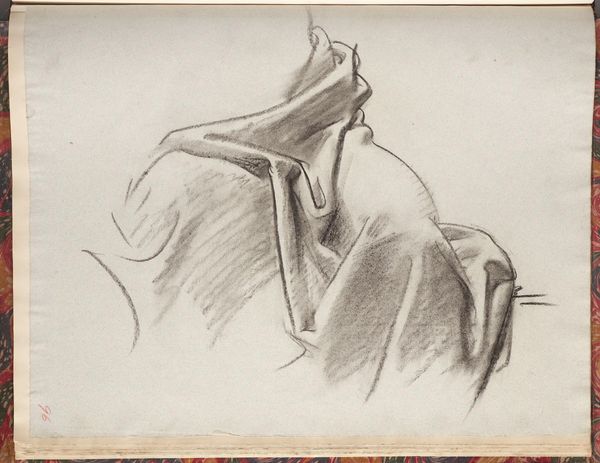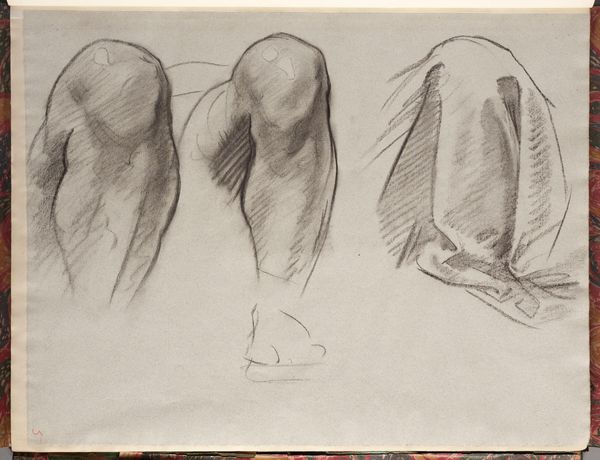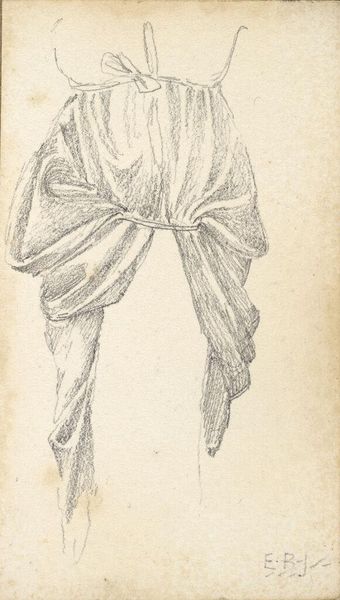
Copyright: Public Domain: Artvee
Curator: Here we have John Singer Sargent's drawing, "Bedouin Women," executed in charcoal around 1890. What's your initial response? Editor: Austere. It strikes me as less a depiction of women and more an arrangement of forms draped in shadow. Curator: Note how Sargent uses the charcoal to define volume and shape. Observe the interplay of light and shadow across the fabric, giving a sculptural presence to these figures. Editor: It’s clearly a study, looking at how fabric both conceals and reveals the body underneath. What kind of cloth is he depicting? Its drape and fall seem key to its meaning. Is it a locally sourced textile? I am fascinated by the craft here; by the weaving processes inherent in its very construction, lost to the casual viewer. Curator: Precisely! The veiling can be read as both a physical barrier and a potent signifier of cultural identity. Think about how he utilizes the very surface to convey texture; you almost feel the roughness of the material, its density playing against the lightness of the paper. Editor: Right. Sargent perhaps downplays individual personality and leans more toward portraying social and class roles through costume. One also wonders about the socio-economic implications related to access of certain materials. What dyes were used to make it that dark? Curator: An astute point. The limited palette contributes to the somber mood, but also underscores the formal concerns—the tonal variations are key to how we read the composition and understand its deeper meanings. Editor: Though presented as "high art," these materials carry embedded narratives that link the artwork back to realities of textile production and trade in the late 19th century. It forces me to see it less as portraiture and more a depiction of garment work of that era. Curator: Indeed. Whether study or statement, Sargent captures something profound in the silent monumentality of these figures. Editor: A compelling piece to think about what's not readily visible and acknowledge the production of artwork itself as form of material process.
Comments
No comments
Be the first to comment and join the conversation on the ultimate creative platform.
